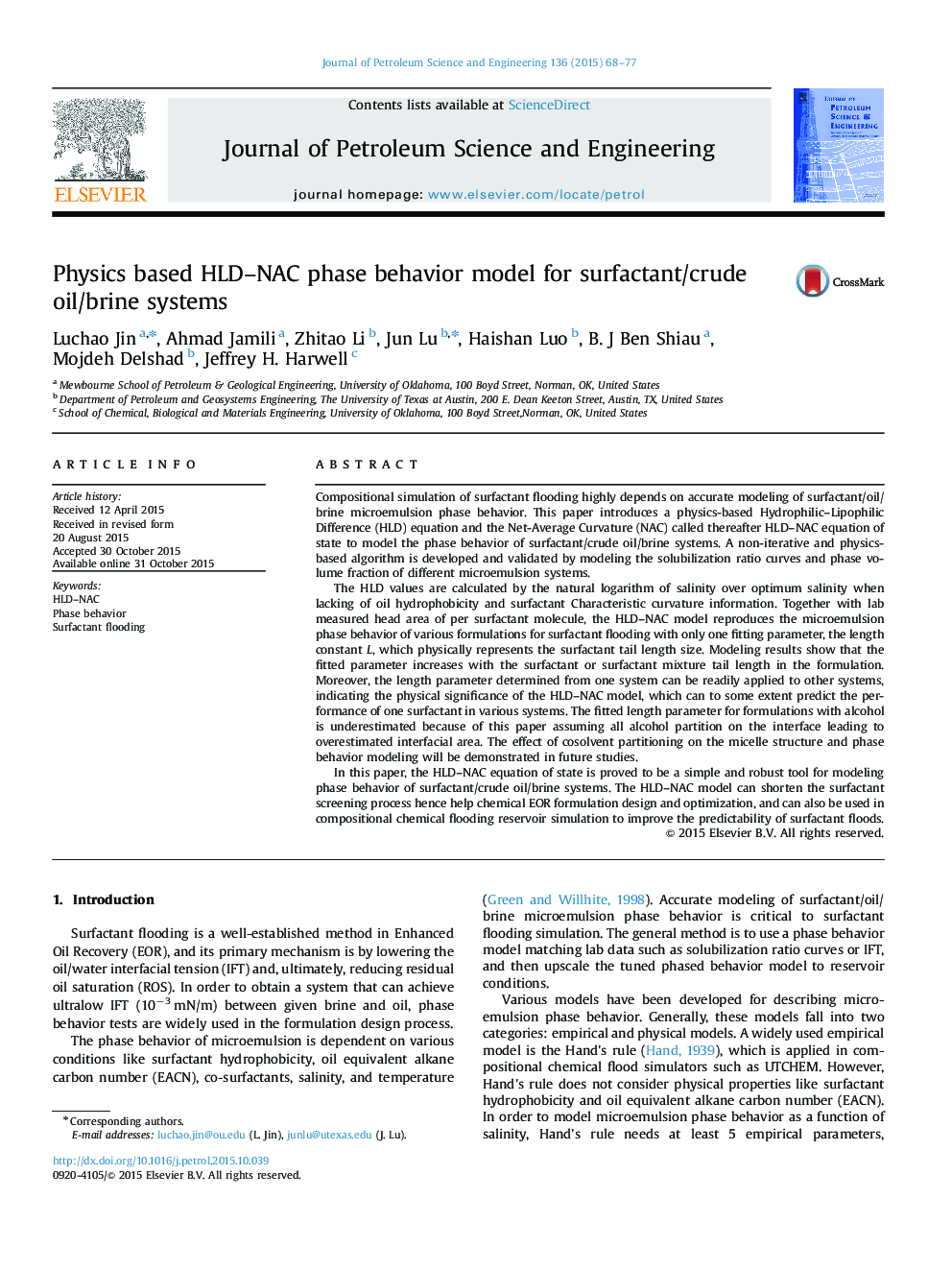| کد مقاله | کد نشریه | سال انتشار | مقاله انگلیسی | نسخه تمام متن |
|---|---|---|---|---|
| 1754845 | 1522805 | 2015 | 10 صفحه PDF | دانلود رایگان |

• We developed an algorithm for modeling surfactant/crude oil/brine systems based on HLD–NAC model.
• Microemulsion phase behavior of various surfactant formulations were modeled by the HLD–NAC model with only one fitting parameter, length constant L.
• The fitted parameter increases with the surfactant or surfactant mixture tail length in the formulation.
• This paper proved that the length parameter determined from one system can be readily applied to other oil, indicating the physical significance of the HLD–NAC model.
Compositional simulation of surfactant flooding highly depends on accurate modeling of surfactant/oil/brine microemulsion phase behavior. This paper introduces a physics-based Hydrophilic–Lipophilic Difference (HLD) equation and the Net-Average Curvature (NAC) called thereafter HLD–NAC equation of state to model the phase behavior of surfactant/crude oil/brine systems. A non-iterative and physics-based algorithm is developed and validated by modeling the solubilization ratio curves and phase volume fraction of different microemulsion systems.The HLD values are calculated by the natural logarithm of salinity over optimum salinity when lacking of oil hydrophobicity and surfactant Characteristic curvature information. Together with lab measured head area of per surfactant molecule, the HLD–NAC model reproduces the microemulsion phase behavior of various formulations for surfactant flooding with only one fitting parameter, the length constant L, which physically represents the surfactant tail length size. Modeling results show that the fitted parameter increases with the surfactant or surfactant mixture tail length in the formulation. Moreover, the length parameter determined from one system can be readily applied to other systems, indicating the physical significance of the HLD–NAC model, which can to some extent predict the performance of one surfactant in various systems. The fitted length parameter for formulations with alcohol is underestimated because of this paper assuming all alcohol partition on the interface leading to overestimated interfacial area. The effect of cosolvent partitioning on the micelle structure and phase behavior modeling will be demonstrated in future studies.In this paper, the HLD–NAC equation of state is proved to be a simple and robust tool for modeling phase behavior of surfactant/crude oil/brine systems. The HLD–NAC model can shorten the surfactant screening process hence help chemical EOR formulation design and optimization, and can also be used in compositional chemical flooding reservoir simulation to improve the predictability of surfactant floods.
Journal: Journal of Petroleum Science and Engineering - Volume 136, December 2015, Pages 68–77